Plan Your Own Butterfly Garden: A Beginner’s Guide
Butterfly gardens are a beautiful and beneficial addition to any backyard. These gardens are designed to attract butterflies by providing them with the necessary resources to thrive, including food, shelter, and water. Not only do butterfly gardens provide a peaceful and serene environment, but they also play a crucial role in supporting the local ecosystem.
Creating a butterfly garden can be a fun and rewarding project for gardeners of all levels. The first step in planning a butterfly garden is to choose a location that receives at least six hours of sunlight per day. Butterflies are cold-blooded creatures and need sunlight to warm up their bodies, so it’s important to provide them with a warm and sunny spot to bask in.
Once a location has been chosen, the next step is to select the right plants. Butterflies are attracted to bright colors, particularly red, yellow, and orange. They also prefer flowers with a flat or shallow shape, as these are easier for them to access. It’s important to choose a variety of plants that bloom at different times throughout the season to provide a continuous source of nectar for the butterflies. In addition to nectar plants, it’s also important to include host plants, which are plants that butterflies lay their eggs on and that caterpillars eat. By including both nectar and host plants, gardeners can create a thriving butterfly habitat in their own backyard.
Disclosure: As an Amazon affiliate, I earn from qualifying purchases at no extra cost to you. My blog contains other affiliate links as well for your convenience. To learn more, you may read my Disclosure Policy. Thank you for supporting my blog!
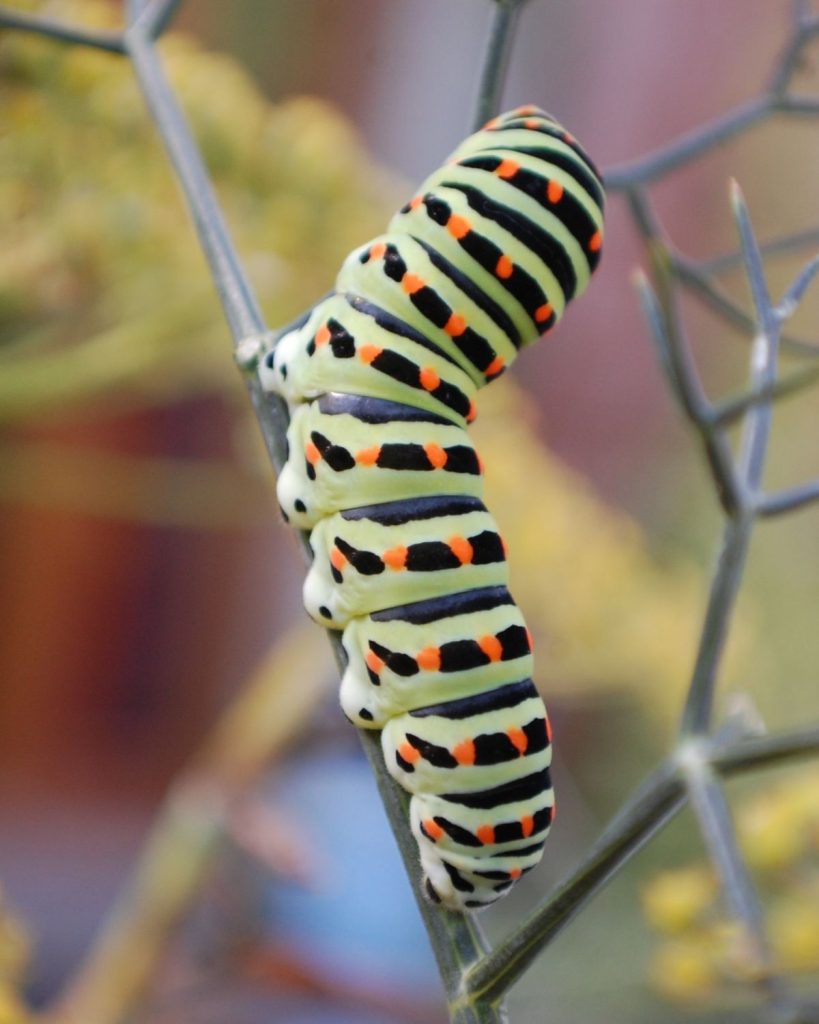
Why Plan a Butterfly Garden
Creating a butterfly garden is not only a beautiful addition to any yard, but it also helps to support the local ecosystem. Butterflies are important pollinators, and they play a crucial role in the reproduction of many plants. Here are a few reasons why planning a butterfly garden is a great idea:
Attract and Support Butterflies
One of the main reasons to plan a butterfly garden is to attract and support butterflies. By planting specific flowers and plants that butterflies feed on, you can create an inviting environment for them to thrive. Not only will you get to enjoy the beauty of these magnificent creatures, but you’ll also be supporting their survival.
Promote a Healthy Ecosystem
Butterflies are just one piece of the puzzle when it comes to the local ecosystem. By creating a butterfly garden, you’re also supporting other pollinators, such as bees and hummingbirds. Additionally, the plants that butterflies feed on can provide food and shelter for other wildlife, such as birds and small mammals.
Enhance Your Yard’s Aesthetic
A butterfly garden can be a beautiful addition to any yard. By carefully selecting plants and flowers that complement each other, you can create a visually stunning display. And the best part? You can enjoy the beauty of your butterfly garden all season long.
Education and Awareness
Creating a butterfly garden can also be a great way to educate others about the importance of pollinators and the role they play in the ecosystem. By sharing your knowledge and experiences with others, you can help to raise awareness and promote conservation efforts.
In summary, planning a butterfly garden is a great way to support local pollinators, promote a healthy ecosystem, enhance your yard’s aesthetic, and educate others. So why not get started today?

Choosing Plants for Your Butterfly Garden
When choosing plants for your butterfly garden, it’s important to consider both nectar plants and host plants. Nectar plants provide food for adult butterflies while host plants provide a place for them to lay their eggs and for the caterpillars to feed. Here are some plants to consider for your butterfly garden:
Nectar Plants
- Butterfly bush
- Coneflower
- Butterfly weed
- Verbena
- Lavender
- Asters
- Bee balm
- Lantana
- Marigold
- Zinnia
- Sweet Alyssum
- Pincushion flower
It’s important to choose a variety of nectar plants that bloom at different times throughout the season to provide a continuous food source for the butterflies.
Host Plants
- Milkweed
- Parsley
- Dill
- Fennel
- Catmint
- Phlox
- Coreopsis
- Black-eyed Susan
- Joe Pye weed
- Asclepias tuberosa
- Petroselinum crispum
Host plants are essential for the survival of butterflies. Be sure to include host plants that are native to your area, as they are better adapted to the local climate and soil.
Other Considerations
In addition to nectar and host plants, there are other considerations to keep in mind when planning your butterfly garden. Providing a water source such as a shallow dish with rocks or a birdbath can provide a place for butterflies to drink and cool off. Shrubs and trees can provide perches for butterflies to rest and bask in the sun.
By choosing a variety of plants and providing other elements that butterflies need, you can create a beautiful and thriving butterfly garden.
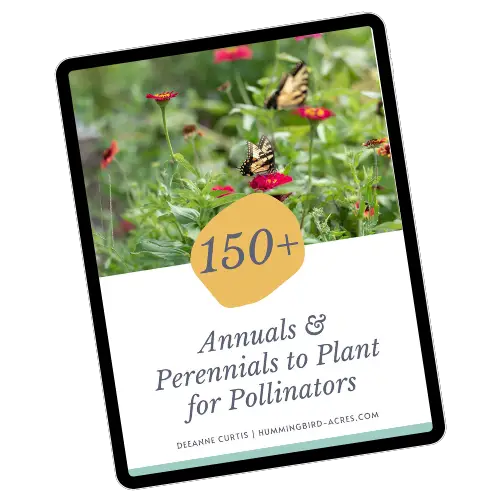
Grab my free
150 Plants for Pollinators
Plant These to Attract Butterflies and Pollinators to Your Garden!
Enter your name & email so we can send you your FREE Guide.
[convertkit form=5600487]
Designing Your Butterfly Garden
When designing your butterfly garden, there are several factors to consider to ensure that it is attractive to butterflies and other pollinators. Here are some key considerations:
Sunlight and Soil
Butterflies love sunny spots, so choose a location that gets at least six hours of direct sunlight each day. The soil should also be well-draining, as butterflies do not like to lay their eggs in waterlogged soil. If your soil is heavy and clay-like, consider adding sand or compost to improve drainage.
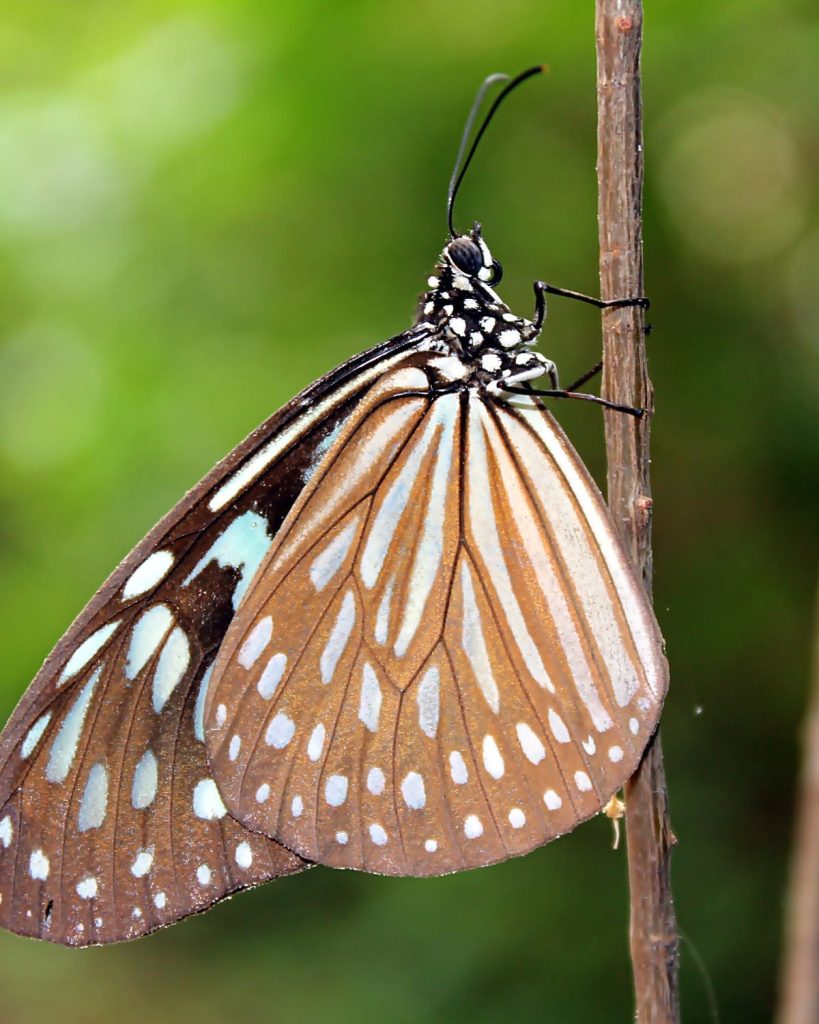
Colors, Heights, and Shapes
Butterflies are attracted to a wide range of colors, so choose a variety of flowers in different hues to create a vibrant and diverse garden. In terms of height, include a mix of tall, medium, and short plants to provide shelter and resting spots for butterflies. Different shapes of flowers can also be appealing to different species of butterflies, so include a variety of shapes, such as spiky flowers like stonecrop, and round flowers like marigolds.
Other Features
In addition to flowers, there are other features you can include in your butterfly garden to make it even more attractive to butterflies. These can include a wall or fence to provide shelter from the wind, a fountain or birdbath for water, and a few host plants for butterfly larvae to feed on.
Remember, when designing your butterfly garden, it’s important to avoid using pesticides, as they can harm butterflies and other beneficial insects. By creating a welcoming and safe environment for butterflies, you’ll be doing your part to support these important pollinators.
Maintaining Your Butterfly Garden
Once you have created your butterfly garden, it’s important to maintain it to ensure that your plants and butterflies thrive. This section will cover some essential maintenance tips for your butterfly garden.
Watering and Fertilizing
Watering and fertilizing are critical for the health of your plants. It’s essential to water your plants regularly, especially during hot and dry weather. However, overwatering can be harmful to your plants and can lead to root rot. It’s best to water your plants deeply once a week, rather than giving them frequent light watering.
Fertilizing your plants is also important to keep them healthy and blooming. Use a slow-release fertilizer once a month during the growing season. Avoid using high-nitrogen fertilizers, as they can promote leaf growth at the expense of blooms.
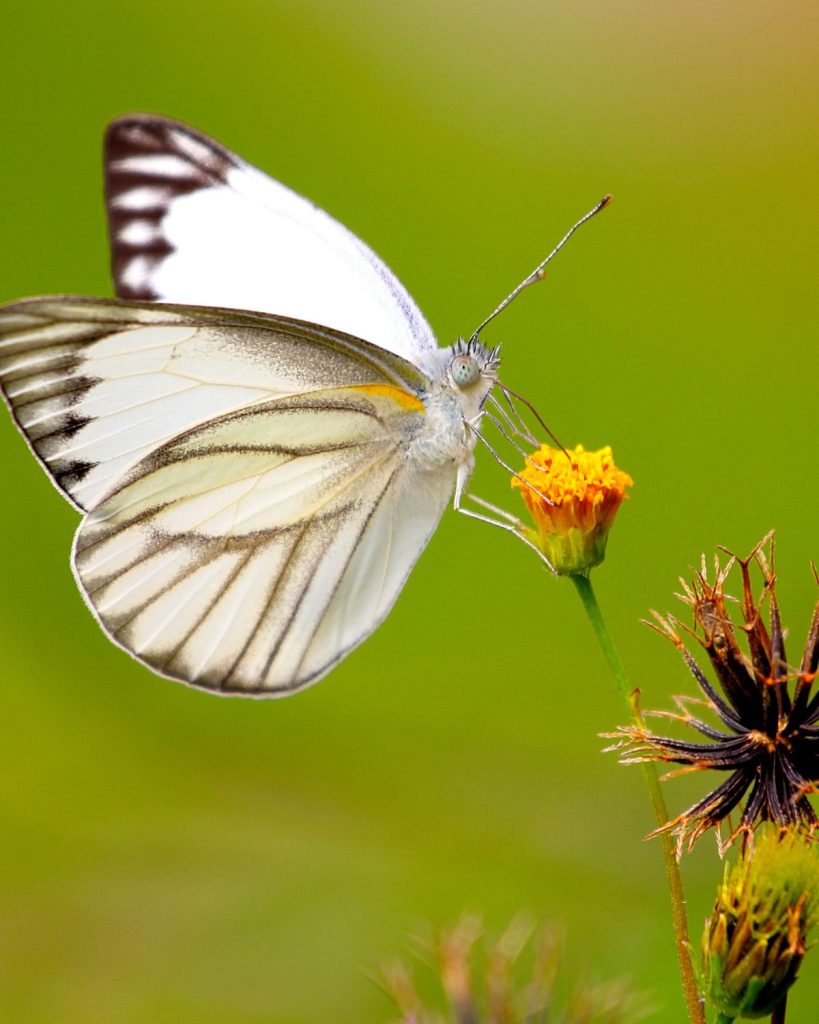
Pest Control
Pests can damage your plants and harm your butterflies. However, it’s essential to use pest control methods that are safe for your butterflies. Avoid using chemical pesticides, as they can be harmful to butterflies, bees, and other beneficial insects. Instead, use natural pest control methods, such as handpicking pests, using insecticidal soap, or introducing beneficial insects like ladybugs.
Winter Care
In colder climates, it’s important to prepare your butterfly garden for winter. Cut back dead foliage and remove any fallen leaves or debris. Mulch around the base of your plants to protect their roots from freezing temperatures. You can also cover your plants with a frost blanket to protect them from frost damage.
Butterfly House
A butterfly house is a great addition to your butterfly garden. It provides a sheltered area for butterflies to rest and roost. You can make a butterfly house by placing a few sticks or twigs in a small container, such as a Mason jar or a plastic container with holes punched in the lid. Alternatively, you can purchase a ready-made butterfly house.
Maintaining your butterfly garden can be a fun and rewarding experience. By following these tips, you can ensure that your plants and butterflies thrive.
Attracting Butterflies to Your Garden
Butterflies are not only beautiful creatures but also important pollinators that play a vital role in our ecosystem. By planting a butterfly garden, you can attract these winged wonders to your yard and provide them with a habitat to thrive. Here are some tips on how to attract butterflies to your garden.
Planting Strategies
When planning your butterfly garden, it’s essential to choose the right plants that attract butterflies. Native plants are an excellent choice as they provide food and habitat for local butterfly species. Perennials and annuals are also great options as they bloom at different times, ensuring a constant supply of nectar for the butterflies.
If you have limited space, you can still attract butterflies by planting in containers. Choose plants that are drought-tolerant and suitable for your region. Mixing different colors and textures of plants can create a visually appealing container garden that also attracts butterflies.
Creating Habitat
Butterflies need more than just nectar to survive. They also require shelter from the wind, a place to lay their eggs, and a source of water. Creating a mixed border of plants with different heights and textures can provide shelter and nectar for adult butterflies and food for their larvae.
Adding a butterfly house or shelter can also provide a safe place for butterflies to rest and lay their eggs. You can make your own butterfly house or purchase a ready-made design.
Butterflies also need a source of water. A shallow dish with a few rocks can provide a water source for butterflies to drink from. Avoid using pesticides in your garden as they can harm butterflies and other beneficial insects.
In conclusion, attracting butterflies to your garden is a rewarding experience that benefits both the environment and your enjoyment of your outdoor space. By following these planting strategies and creating a habitat for butterflies, you can help support these important pollinators.
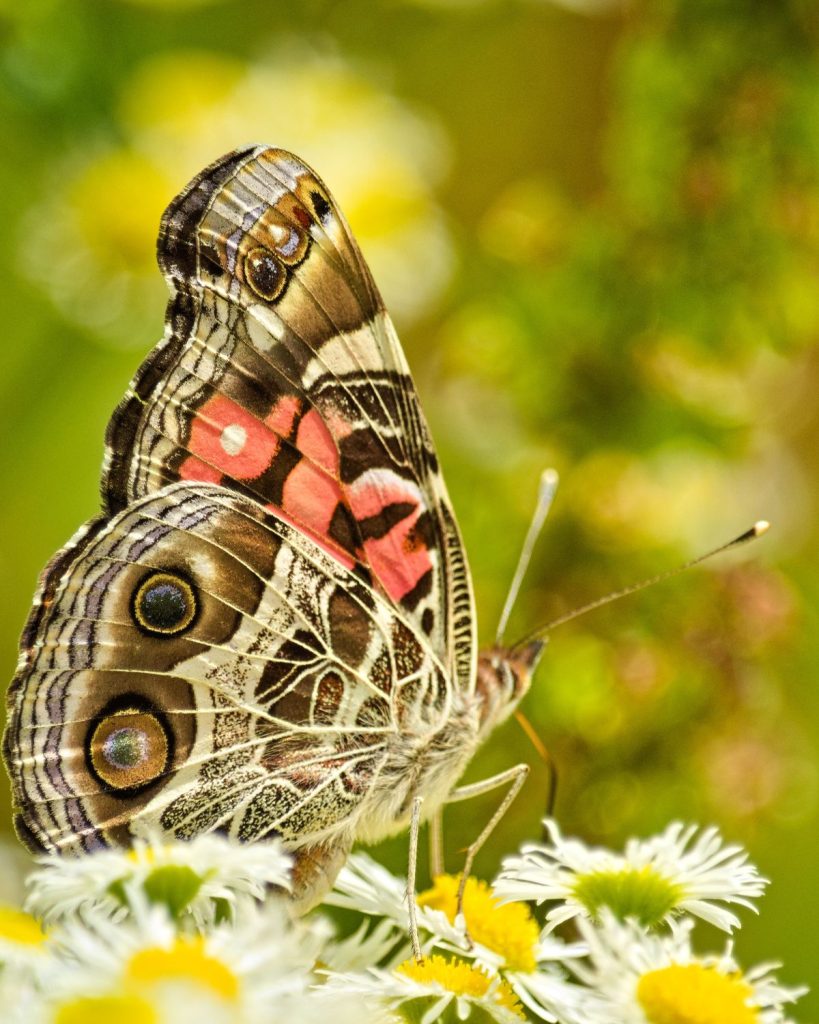
Creating a butterfly garden is a rewarding and fulfilling experience. It provides a habitat for adult butterflies and larvae, and it helps to conserve species like swallowtails and monarch butterflies. By planting easy-to-grow and low-maintenance plants like oranges, blue fescue, and pollinator-friendly seeds, you can create a lush and colorful garden that attracts not only butterflies but also hummingbirds.
When planning a butterfly garden, it is important to consider the needs of both adult butterflies and larvae. Providing host plants for larvae and nectar plants for adult butterflies will ensure a healthy and thriving population. Additionally, planting a variety of plants that bloom at different times throughout the season will ensure a steady supply of pollen and nectar.
Maintaining a butterfly garden is easy and can be done with minimal effort. Regular watering, weeding, and pruning will keep the garden looking its best. It is also important to avoid using pesticides, which can harm butterflies and other beneficial insects.
In conclusion, creating a butterfly garden is a fun and easy way to support local wildlife and add beauty to your outdoor space. With a little planning and care, you can create a thriving habitat for butterflies and other pollinators.
